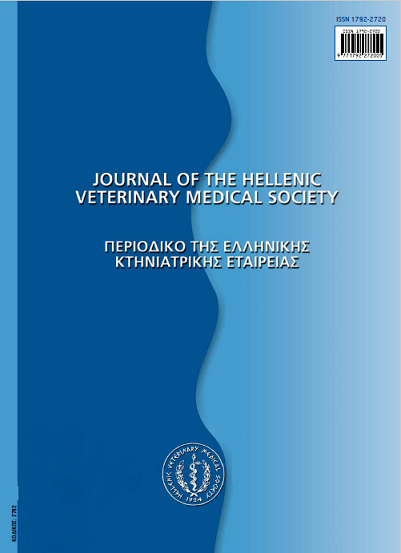Η τέχνη της χρησιμοποίησης των σαμπουάν στη δερματολογία του σκύλου και της γάτας: Θεραπεία και πρόληψη

Περίληψη
Στην εργασία αυτή επιχειρείται μια ευρεία ανασκόπηση της σύγχρονης τεχνολογίας που διέπει τα κτηνιατρικά σαμπουάν με θεραπευτικό προορισμό τις δερματοπάθειες του σκύλου και της γάτας. Συγκεκριμένα, αναφέρονται τα κριτήρια αξιολόγησηςτης αποτελεσματικότητας των προϊόντων αυτών και οι ενδείξεις χρήσης τους στις κερατινοσμηγματορροϊκές δερματοπάθειες και στις παρασιτικές, βακτηριδιακές, μυκητιακές και αλλεργικές δερματίτιδες. Στις πρώτες χρησιμοποιούνται κερατινορυθμιστικές και αντισμηγματορροϊκές ουσίες. Τα αντιπαρασιτικά σαμπουάν δε χρησιμοποιούνται συχνά στην κτηνιατρική δερματολογία, ενώ παράλληλα συζητούνται οι ενδείξεις και οι περιορισμοί στη χρήση τους. Αναφέρονται, επίσης, οι αντιβακτηριδιακές, αντιμυκητιακές και αντισηπτικές ουσίες των σαμπουάν που χρησιμοποιούνται στην τοπική θεραπεία των δερματοπαθειών που οφείλονται σε λοιμώδη αίτια, για να ακολουθήσει η συζήτηση πάνω στις ενδείξεις και την αποτελεσματικότητα τους. Σήμερα τα σαμπουάν, σε συνδυασμό με άλλα θεραπευτικά μέσα, χρησιμοποιούνται στα πλαίσια της θεραπείας των αλλεργικών δερματίτιδων με καλά αποτελέσματα παρά το συπληρωματικό τους χαρακτήρα. Τέλος, αναφέρονται οι ιδιότητες των ενυδατωτικών ουσιών, με έμφαση στη χρήση τους σε συνδυασμό με τα φαρμακευτικά σαμπουάν.
Λεπτομέρειες άρθρου
- Πώς να δημιουργήσετε Αναφορές
-
CARLOTTI, D. N., & GATTO, H. (2017). Η τέχνη της χρησιμοποίησης των σαμπουάν στη δερματολογία του σκύλου και της γάτας: Θεραπεία και πρόληψη. Περιοδικό της Ελληνικής Κτηνιατρικής Εταιρείας, 56(2), 162–173. https://doi.org/10.12681/jhvms.15080
- Τεύχος
- Τόμ. 56 Αρ. 2 (2005)
- Ενότητα
- Review Articles
Οι συγγραφείς των άρθρων που δημοσιεύονται στο περιοδικό διατηρούν τα δικαιώματα πνευματικής ιδιοκτησίας επί των άρθρων τους, δίνοντας στο περιοδικό το δικαίωμα της πρώτης δημοσίευσης.
Άρθρα που δημοσιεύονται στο περιοδικό διατίθενται με άδεια Creative Commons 4.0 Non Commercial και σύμφωνα με την άδεια μπορούν να χρησιμοποιούνται ελεύθερα, με αναφορά στο/στη συγγραφέα και στην πρώτη δημοσίευση για μη κερδοσκοπικούς σκοπούς.
Οι συγγραφείς μπορούν να καταθέσουν το άρθρο σε ιδρυματικό ή άλλο αποθετήριο ή/και να το δημοσιεύσουν σε άλλη έκδοση, με υποχρεωτική την αναφορά πρώτης δημοσίευσης στο J Hellenic Vet Med Soc
Οι συγγραφείς ενθαρρύνονται να καταθέσουν σε αποθετήριο ή να δημοσιεύσουν την εργασία τους στο διαδίκτυο πριν ή κατά τη διαδικασία υποβολής και αξιολόγησής της.


